Chiapas
Chiapas is the southern most state of Mexico, bordering Guatemala. It is part of the Maya homeland, hearth of the Maya civilization and still home to millions of their descendents who continue to speak their languages and conserve their seed and key parts of their culture. Chiapas has a rugged, mountain terrain with great ecological diversity resulting in one of the most important natural regions of the world and home to an important region of tropical rainforest.
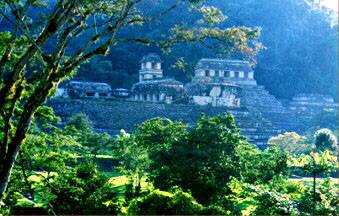
Palenque
Typical landscape of Chiapas, this near Ocosingo in the transition between highland pine-oak and evergreen tropical forests. Image by www.downtheroad.org
Chiapas - Tourist Information
State Tourism Office (English)
Indigenous population
Around one third of Chiapas' three million inhabitants form part of one the Maya or Zoque indigenous cultural groups. As the 21st Century begins, the Indians of Chiapas are no longer isolated, they are dealing with a number of global issues and many have migrated (some are here in Virginia).
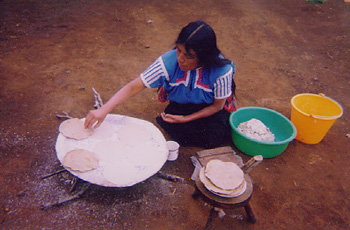
Making tortillas
Photo by Pasquala Santiz Lopez
***READING ASSIGNMENT***
A good way to get a feel for how some of the global issues we will be addressing are felt in places like Chiapas is to read:
Collection of phtotos of Maya women taken by Mayans, members of the Indian Photo Archive at CIESAS, San Cristobal de Las Casas
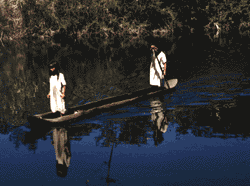
Returning from fising on Lake Metzabok. photo by R. Johnston
Hach Winik - Lancandon Maya
Ethnographic overview of a vanishing, traditional Maya lifeway in the Lacandon Rainforest
In defense of maiz
Znet article by John Ross on Indian reaction to contamination of maize by transgenes introduced from US
Bio-Piracy in Chiapas
Article by Bill Weinberg critical of the ICBG Maya bioprospecting project. Some Indians objected to this project out of concern that their rights and cultural values were not adequately considered. The project was eventually cancelled.
Zapatista Uprising
On January 1, 1994 Mexico and the world awoke to find several towns in Chiapas, including the popular tourist destination of San Cristobal de Las Casas, taken by rebels. The first reaction was surprise and confusion as there had been no awareness of the group previous to that moment. There was speculation that the clearly indigenous insurgents were from Guatemala or even that they had been put up to a stunt by the Mexican government to justify military intervention in the state. Only with time did the nature of the Zapatista army, consisting entirely of Mexicans, mostly Chiapas indigenous people, become clear. The violent phase of the uprising lasted onl y 12 days and negotiations with the government led to the signing of the 'San Andres Agreements', considered a landmark document on indigenous rights. However, the Mexican government has subsequently refused to honor the agreements it initially signed. The Zapatistas have accomplished few of their goals on the ground but have become an icon in Mexico and the world for resistance to policies that further corporate globalization. Not all, or even most, Indians in Chiapas are Zapatistas and Indian communities are bitterly divided, in many cases, over political and religious issues. Nonetheless, the Zapatistas have redefined the terms of dialogue on globalization and the the models of 'development' for the whole world.
Zapatistas fight for justice
An analysis of the the causes of the Zapatista uprising of Jan 1, `994
Zapatistas in Cyberspace
Excellent guide to Zapatista presence in Cyberspace, through mid-2003
Coffee
Many people wonder what provokes a social movement like the Zapatistas. The reasons are complex, but part of the story is coffee...
Social Dimensions of Organic Coffee Production in Mexico: Lessons ... [pdf]
Poverty Alleviation through Fair Trade Coffee
Study on impact of fair trade on smallholder coops in Chiapas and Central America 2002
Cafe Mam organic coffee
Site of organic coffee coop ISMAM
The organic and fair trade coops like ISMAM or Mut Vitz attempt to better their position through direct marketing of their coffee to sympathetic consumers. However, most have come to see that dependence on a single commodity, even under the best of circumstances, cannot guarantee long-term economic and food security. Almost all the coops have programs to diversify their production and apply the organic techniques the use for coffee to supplying local and regional markets. Dana is an organization I work with that helps farmers achieve these goals. Among our current projects is an Organic Seed Garden, that seeks to recoverr local agrobiodiversity and encourage seed saving among local farmers. Another project, in cooperaton with La Casa del Pan bakery, involves recovering organic wheat production in areas where wheat was formerly grown in the Chiapas highlands
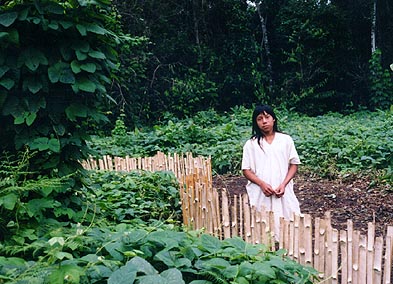
Lacanja
Dana's experiment with green manure (Mucuna mucuna) in the Lacanja 'Casa de la Cultura' organic milpa
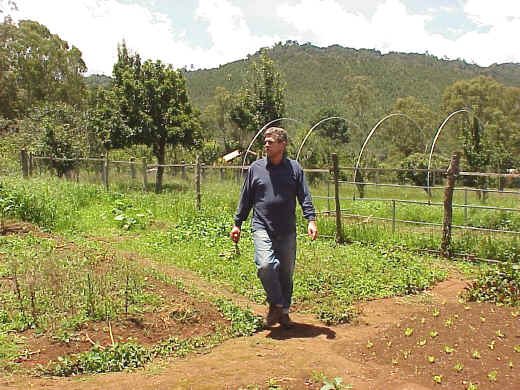
Dana, A.C.
Some activities of our NGO in Mexico (needs updating)
Community Ecotourism and Organic Agriculture
Description of a community development project in the Lacandon Rainforest 1995-2001
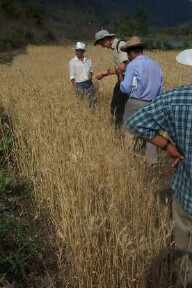
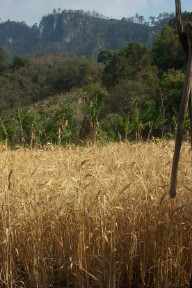
Organic wheat in Rio Florido, Huistan
La Casa del Pan
Vegetarian restaurante in San Cristobal founded by Kippy Nigh, very supportive of local organic farmers and local food
Research
I also have a 'day job' as a research professor at:
CIESAS sureste
Centro de Investigaciones y Estudios Superiores en Antropologia Social del Sureste - San Cristobal de Las Casas, Chiapas
I am currently involved in long-term research on land-use and food systems. We are looking at long-term trends in the environmental history of the Maya Forest to detect trends that have favored biodiversity and ecosystem conservation in order to help design future policies for the region
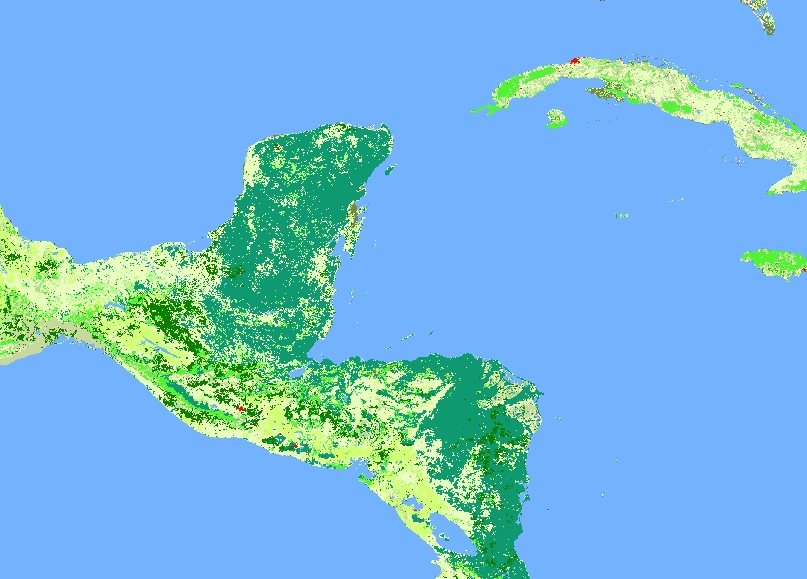
The Maya Forest
ICBG Land Cover data from 2002